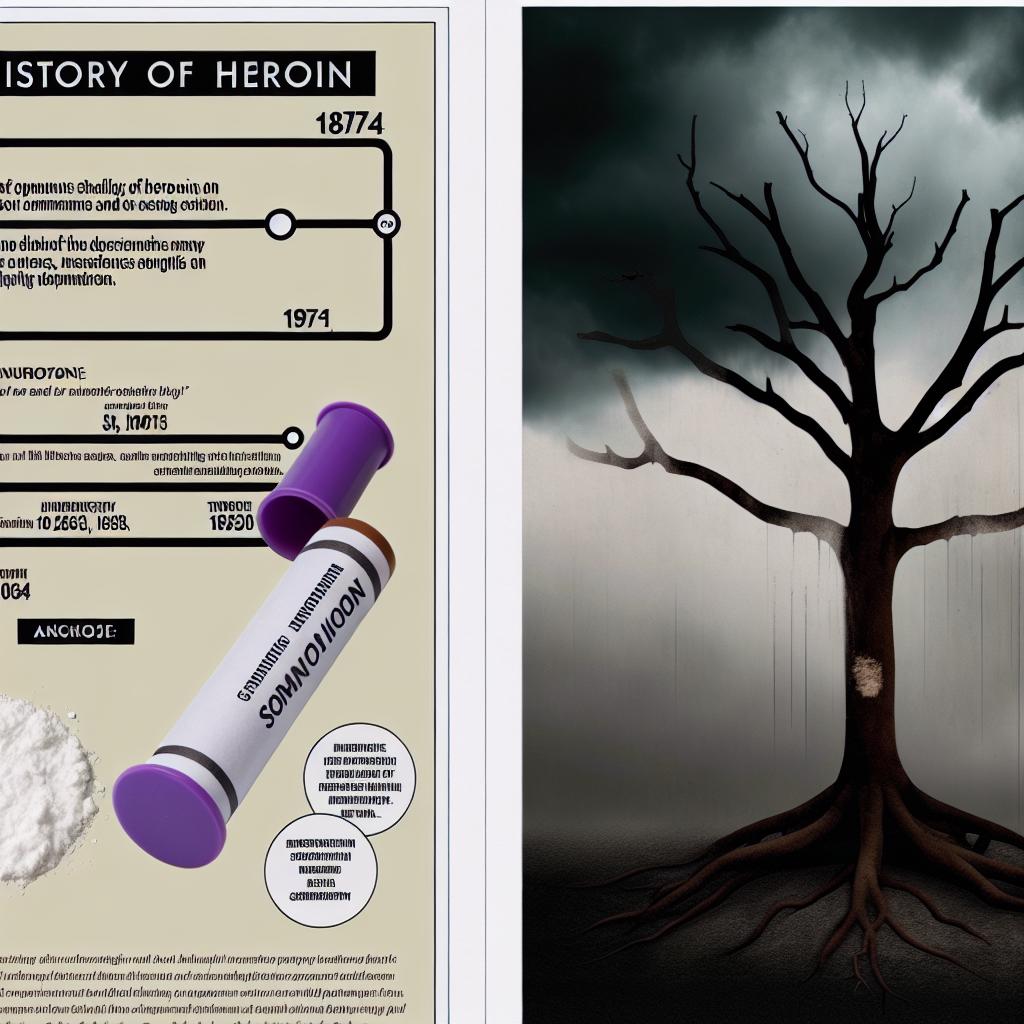Introduction
Heroin, derived from morphine, is a potent opioid drug that has played a significant role in the history of substance use. Understanding its history, impact, and the attempts to control its use is crucial in addressing the ongoing opioid crisis. Heroin’s trajectory from a medical marvel to a societal challenge underscores the complexities of drug use and addiction in modern times. Exploring its origins, medical applications, the dark turn towards illicit trade, and the resultant societal impacts can provide valuable insights into how to approach current and future drug crises.
Origins of Heroin
Heroin was first synthesized in 1874 by the British chemist C.R. Alder Wright but garnered little attention until its rediscovery by German scientist Heinrich Dreser in the late 19th century. At that time, Bayer, a leading pharmaceutical company, began marketing it as a non-addictive alternative to morphine, a drug already prevalent in medical treatments but associated with significant addiction problems. The initial belief in heroin’s non-addictive properties resulted from a lack of comprehensive understanding of addiction and scientific methodologies that could systematically assess long-term impacts on human health.
The late 1800s represented a period of experimentation and burgeoning exploration in the field of pharmaceuticals. Heroin’s development was rooted in a broader period of chemical innovation. Though it was discovered in the 19th century, it wasn’t until it went through clinical introduction by Dreser that its effects became clearly observable to practitioners and users alike. This period marked a turning point in pharmaceutical practices where trial-and-error played a significant role in determining drug utility and risks.
Medical Application and Prohibition
In the early 20th century, heroin’s use expanded as it was employed to treat various respiratory illnesses, regarded as a miracle drug compared to its predecessors. The medical community initially lauded heroin for its efficacy in relief and management of symptoms. However, it soon became evident that the drug carried the same, if not greater, addiction potential as morphine.
The revelation of heroin’s addictive properties catalyzed the establishment of stricter control over prescription drugs. In the United States, the Heroin Act of 1924 formally banned the substance, reflecting changing attitudes toward controlled substances amid growing concerns about addiction. This move was echoed internationally through various agreements like the Single Convention on Narcotic Drugs of 1961, which aimed to curb the proliferation of narcotics, placing numerous drugs under international regulation. This marked a shift in drug policy thinking, from unregulated usage to a more cautious and preventive stance.
The Illicit Market
Following the prohibition, heroin transitioned from a prescribed medication to a target of illicit trade. This shift led to the emergence and expansion of a thriving black market that became synonymous with drug trafficking, violence, and organized crime. The lucrative nature of the trade attracted participants from various backgrounds and became a cornerstone of illegal economic activities in many regions worldwide.
Efforts to combat this illegal trade have varied significantly across countries, ranging from militaristic and law enforcement-focused to more nuanced approaches involving community and social interventions. Despite these efforts, the resilience of this illicit network remains challenging to dismantle, necessitating innovative international cooperation strategies and local intervention policies. This persistent trade continues to exploit vulnerable populations, posing threats to public safety and bolstering organized crime entities globally.
Impact on Society
The effects of heroin abuse are profound and multifaceted. On an individual level, heroin use leads to numerous physical complications, such as respiratory depression and increased susceptibility to infectious diseases due to common practices like needle sharing. The impact of heroin extends into severe health problems that can cause irreversible damage or lead to fatal overdoses if use continues unchecked.
Psychologically, heroin fosters dependency, often leading users into cycles of addiction that require comprehensive treatment to break. The stigma surrounding addiction can exacerbate these effects, limiting access to essential support and increasing isolation among users. Community and health services often struggle to address these challenges, indicating a need for improved awareness and resource allocation.
Economic and Social Implications
Heroin abuse brings about significant economic and social costs. Economically, the burden on healthcare systems is substantial, with treatments for addiction and related health complications requiring extensive resources. The broader societal costs manifest in lost productivity due to absenteeism and unemployment among users. Furthermore, crime-related expenses and the strain on law enforcement and justice systems highlight the far-reaching implications of heroin addiction.
Crime connected to heroin use not only directly costs society through law enforcement expenditures but also contributes to a general sense of insecurity. Communities affected by high levels of addiction commonly observe increased violence and criminal activities. The social fabric of these communities often suffers, requiring concerted efforts to rebuild and provide opportunities for recovery and growth.
Modern Approaches to Heroin Addiction
Efforts to combat heroin addiction have evolved over time, as modern strategies implement a holistic approach involving law enforcement, harm reduction, and treatment programs. **Harm reduction** initiatives, such as needle exchange programs and supervised injection sites, focus on decreasing immediate use-related risks, prioritizing user safety and public health.
**Treatment** has progressed significantly, with medication-assisted treatments like methadone, buprenorphine, and naltrexone helping manage withdrawal symptoms and reduce cravings. Such treatments are complemented by behavioral therapies designed to address the psychological elements underlying addiction. There is a growing recognition of the need for treatment programs that are accessible, non-punitive, and adaptable to the diverse needs of individuals struggling with heroin addiction.
Conclusion
A thorough understanding of heroin’s historical context and its extensive social impact is essential for crafting effective strategies to address abuse and dependency. Efforts have been made, but combating heroin addiction requires continuously adapting and evolving strategies, emphasizing prevention, education, and treatment. With emerging opioid crises, the lessons learned from heroin’s trajectory can guide current interventions and future responses, emphasizing collaboration across sectors to mitigate the myriad challenges associated with addiction. As society continues to grapple with these issues, persistent and informed endeavors remain key to successfully addressing heroin-related problems.





